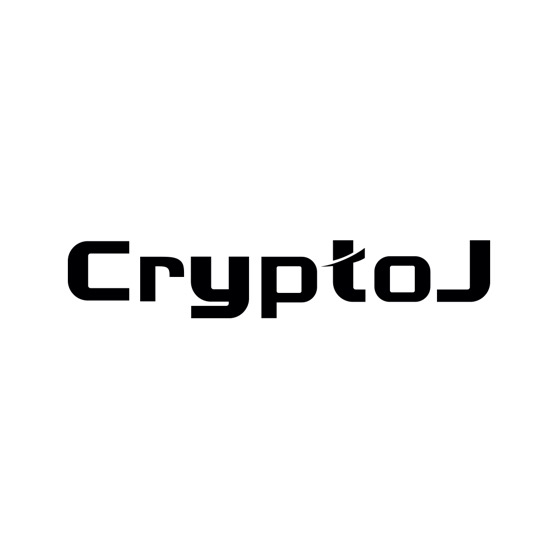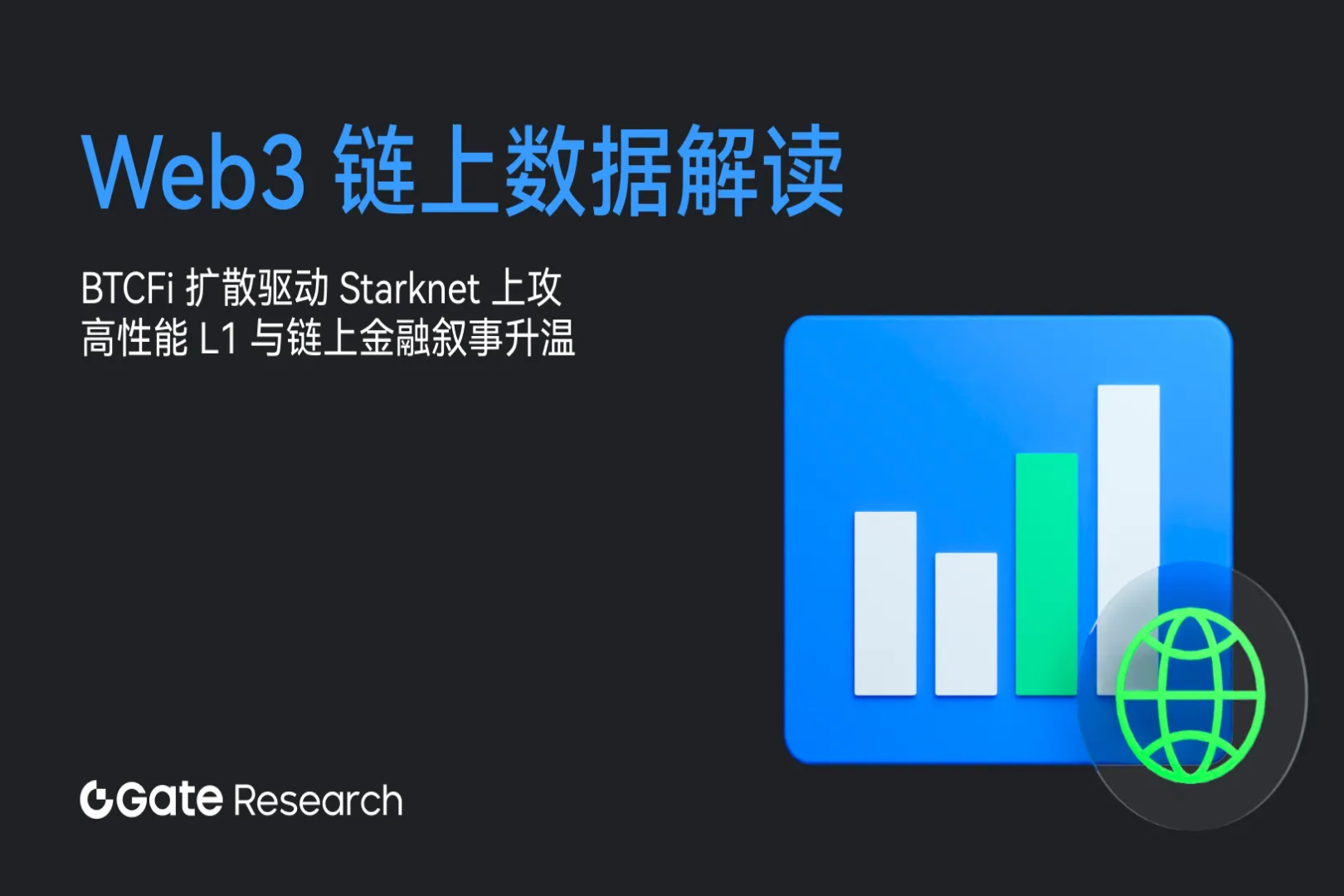4D Interpretation of Public Chain Aptos: Opportunities and Challenges Under First Mover Advantage
Original author: AppleJ, CryptoJ researcher
Since the public chain project Aptos was officially exposed in February this year, it has continued to attract market attention due to its own Facebook team background. With the blessing of the "star team background halo", the capital side threw out a high olive branch. On July 25, Aptos completed a new round of financing of 150 million US dollars, so far, the total amount of public financing has reached$350 million, in the quiet market, Aptos teamed up with Sui, Linera and other projects to set off a round of"Meta System Layer1"Discuss the wave.
Aptos has obtained hundreds of millions of financing progress and sufficient market attention before the main network has been launched. chain, still in theearly stage of development. CryptoJ will conduct a brief discussion based on public information from the basic situation of the Aptos project, ecological development, technology network progress, development planning and other aspects. The research content of this article is for reference only and does not constitute investment advice.
first part:
first part:the second part:
the second part:Use multiple modules such as DeFi, NFT, wallet, infrastructure, and Web3 as the entrance to sort out Aptos' existing ecological projects and its main social media popularity;
the third part:Explore Aptos' existing network and technological progress from the aspects of Move language, state synchronization, incentive testnet, parallel execution engine, BFT consensus protocol, blockchain core stack of technology roadmap, etc.;
fourth part:Discuss the potential uncertainties of Aptos' future development from five aspects, including the actual launch of the mainnet, the competition of the public chain track, the Meta competition network, network value capture and learning costs.
secondary title
1.1 Brief description of the project
Aptos (https://aptoslabs.com/) is a Layer1 public chain project initiated by former team members of the Facebook (later renamed Meta) stablecoin project Diem (formerly Libra). Its goal is to build the safest and most scalable Layer1 blockchain.
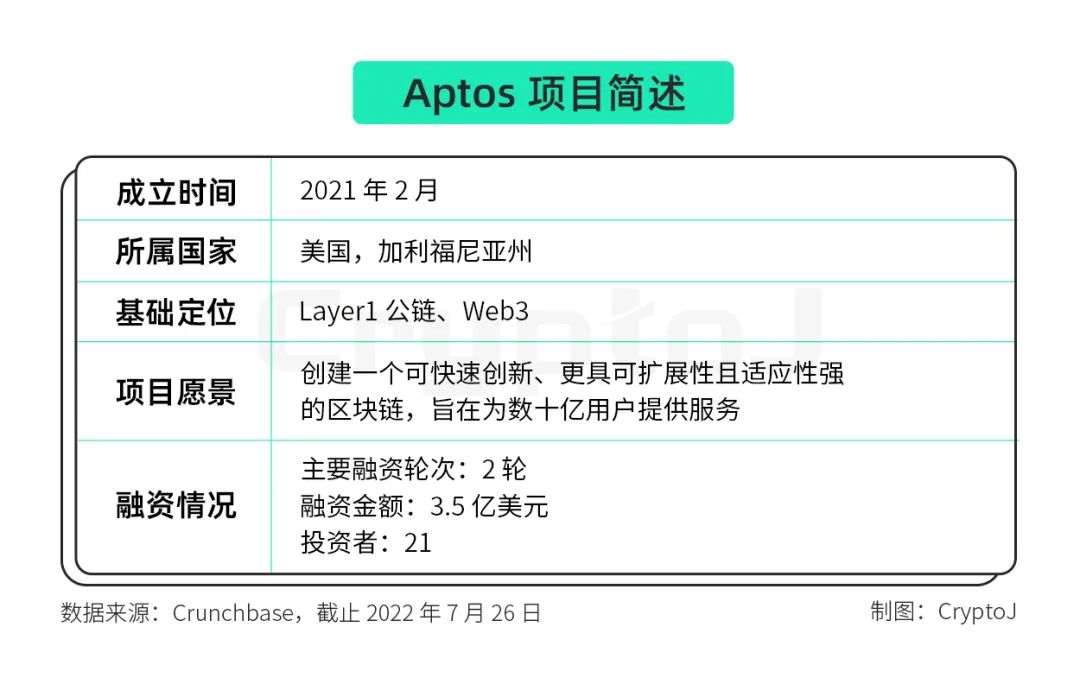
Aptos (Ohlone, meaning "The People"), contains its mission and spirit, that is, why it is built, the vision (https://medium.com/aptoslabs/the-aptos-vision-1028ac56676e) is the number A billion people create universal and equitable access toOpportunities for Decentralized Assets. The Web3 stack is huge and rich, from smart contract platforms to developer infrastructure and tools, wallets, and decentralized applications. In the coming years, expect to form partnerships with ecosystem players to improve the entire space.
Aptosfirmly believesecondary title
1.2 Aptos Development History
Tracing the development history of Aptos so far, we have to mention the predecessors of the team membersMeta (formerly Facebook).
Diem, a stablecoin project under Meta (formerly Facebook), was acquired by Silvergate
January 31, 2022buybuyTechnology and other assets from the Meta stablecoin project Diem (formerly Libra) to enhance its existing stablecoin infrastructure.
Under the terms, Silvergate will manage the reserves and self-issue a “regulated and highly scalable” U.S. dollar stablecoin, which it plans to launch by the end of the year. The assets acquired by Silvergate include the development, deployment and operation of related infrastructure and operational tools to support a blockchain payments network that facilitates commercial payments and cross-border remittances.
Aptos has entered the market publicly, and the founder and other team members are all from Diem
February 24, 2022, Aptos entered the market with a blog post called "The Genesis of Aptos" (https://medium.com/aptoslabs/the-genesis-of-aptos-ff98d86e9445), which The author is a former Diem main tribute builderMo Shaikh, while speaking as the co-founder and CEO of Aptos.
Mo Shaikh states in this blog post:"We're not starting from scratch."“We are the original creators, researchers, designers, and builders of Diem, and the original blockchain was built for that purpose. While the world never gets to see what we build, our work is far from over. "
“Aptos will be based in part on public technology that we have developed over the past three years. Aptos uses a secure and reliable language originally developed for DiemMove. The ideas we conceived at the time are still relevant and will serve as a secure, scalable, upgradableImportant foundation for Web3. Our plans for decentralized and permissionless access are progressing rapidly and will be developed in the open. "
Aptos Completes $200 Million Financing
March 15, 2022, Aptos completed$200 millionFinancing (https://medium.com/aptoslabs/expanding-the-aptos-community-38c5b18a84b7), led by a16z, Multicoin Capital, Katie Haun, ParaFi Capital, IRONGREY, Hashed, Variant, Tiger Global, BlockTower , FTX Ventures, Paxos, Coinbase Ventures and others participated in the investment.
In addition to the participating institutions announced above, according to CoinDesk (https://www.coindesk.com/business/2022/05/31/paypal-ventures-invested-in-team-reviving-diem-blockchain/),Payment giant PayPalIt was confirmed on May 31 that PayPal Ventures, its venture capital arm, was the financing partner for Aptos's US$200 million round.one of the participants, this investment is from PayPal VenturesThe first Layer 1 public chainproject.
Binance Labs Announces Strategic Investment in Aptos
March 28, 2022, Binance LabsAnnounced (https://www.binance.com/en/blog/ecosystem/binance-labs-makes-strategic-investment-in-aptos-labs-for-the-industry-adoption-acceleration-421499824684903620) strategic investment in the public chain The project Aptos development team, Aptos Labs, will work closely with Aptos on development, code reviews, infrastructure construction and hackathons. However, the specific round and amount of this round of financing have not yet been publicly disclosed.
Aptos Launches Incentivized Testnet
May 14, 2022Aptos officially launched (https://medium.com/aptoslabs/announcing-the-aptos-grant-program-7654b92e22a1) incentivized testnet, participating users need to authenticate with a valid Discord or GitHub account, and deploy validators to join testnet. Registration will end at 5:00 on May 20, 2022, Beijing time, and test invitations will be issued at 3:00 on May 24, Beijing time.
Aptos Launches Ecosystem Grant Program
June 29, 2022Aptos announced the (https://medium.com/aptoslabs/announcing-the-aptos-grant-program-7654b92e22a1) ecosystem grant program to provide funds for teams, individuals and creators to accelerate the development of the Aptos ecosystem. Funding categories include: developer tools, SDKs, libraries, documentation, guides, and tutorials; tools and frameworks for development, governance, DeFi, and NFTs; core protocol contributions: token standards, libraries, protocol upgrades, and more; open source and public products ; educational initiatives; applications. Grant funds will be distributed in U.S. dollars, with the option to distribute tokens in the future to help incentivize long-term ecosystem growth for all parties, Aptos said.
Aptos Incentivized Testnet 2 Registration Open
July 1, 2022,Aptos announced (https://medium.com/aptoslabs/welcome-to-aptos-incentivized-testnet-2-af26e2fd69a7) that the Incentivized Testnet 2 will open for registration. The registration will end on July 7 and the notification will be issued on July 11. The testnet will be launched from July 12th to July 22nd. Participants to be tested should join the testnet within 24 hours of being notified.
The Aptos team will airdrop enough test coins to the selected participants, and participants who complete the test will receive 500 coinsAptos Token Rewards. Aptos beta reward tokens will only be available to non-USone year lock-up period。
Aptos Completes $150 Million New Round of Funding
July 25, 2022Aptos announced (https://medium.com/aptoslabs/entering-the-next-phase-of-the-aptos-journey-with-added-funding-and-new-partners-d4daa03dd17c) completion$150 millionThe new round of financing was led by FTX Ventures and Jump Crypto, with other investors including Griffin Gaming Partners, Franklin Templeton, Circle Ventures and Superscrypt, a16z crypto and Multicoin Capital, among others.
The main network is expected to be launched in autumn
Aptos stated in its official blog (https://medium.com/aptoslabs/announcing-the-aptos-grant-program-7654b92e22a1) at the end of June that Pontem Network, the Macalinao brothers, Nutrios, PayMagic, MartianDAO, Solrise and other teams have been Writing code to prepare for the Aptos mainnet launch at the end of September.
However, it was pointed out in the update of the official blog (https://medium.com/aptoslabs/aptos-incentivized-testnet-2-highlights-and-updates-ee478eace33c) on August 1 about the progress of Aptos Incentivized Testnet 2 that it is expected thatMainnet will be launched in autumnGo online, after the mainnet goes online, it will be inWinter launch of Testnet 4. At the same time, the official update on the progress of the incentive test network 2 pointed out that in the completed test network 2, a total of 225 nodes participated in the test, distributed in 110 cities in 44 countries around the world. Aptos will award Aptos tokens to participants in Incentivized Testnet 2 who meet certain conditions.
The key time nodes for other updates are as follows:
AIT3 Registration - August 19
Code Freeze - August 25th
AIT3 Launch - August 30
End of AIT3 - September 9
Mainnet Launch - Autumn
secondary title
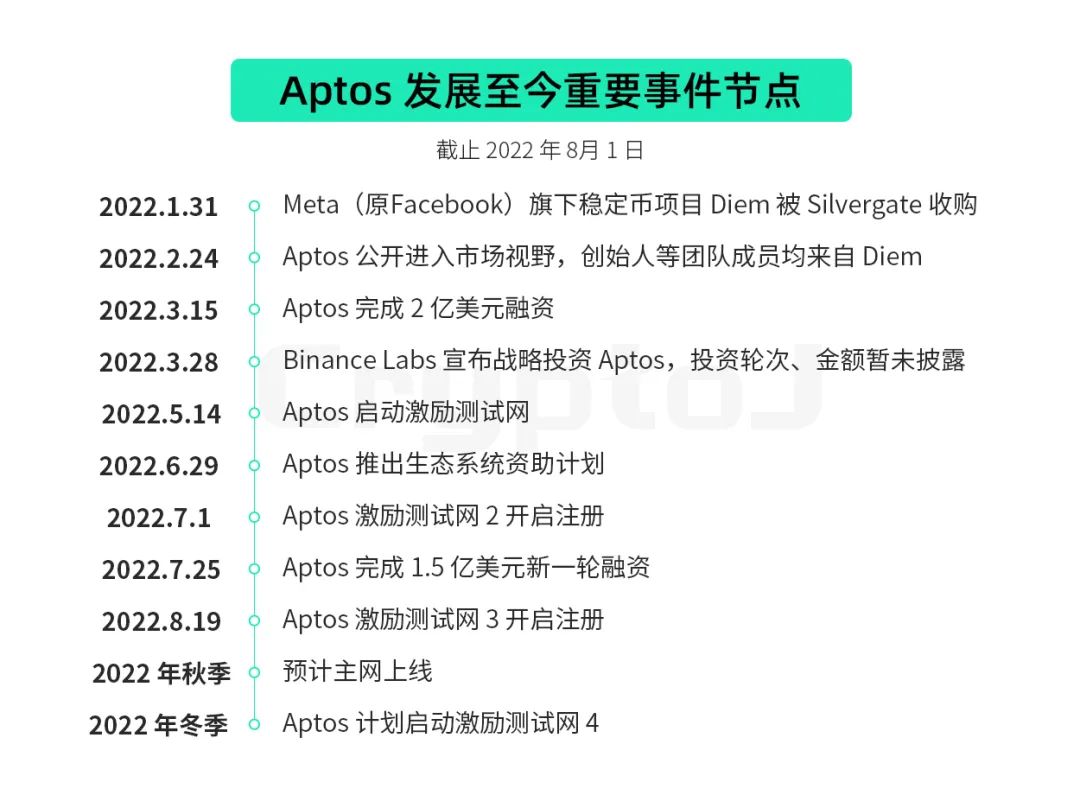
1.3 Team Background
Many key Aptos team members come fromMeta, for example, Aptos co-founder and CTO Avery Ching and Mo Shaikh were both formerMain builder of Diem and Novi.
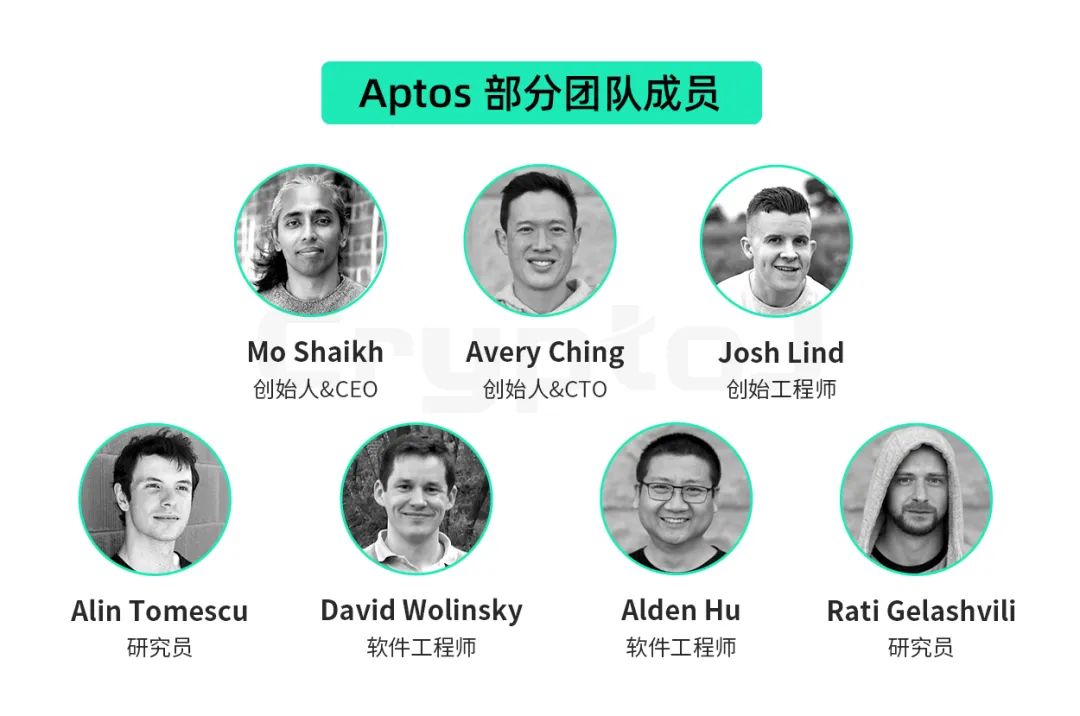
In addition, most of the developers and researchers such as Alden Hu in the development team participated in the development of Diem and Novi. Aptos team members have rich experience in large-scale development and deployment, while continuing the familiar Move language, which helps to further extend and enhance the stability and security of the underlying code of Aptos to a certain extent.
In addition, there are Alden Hu, Alin Tomescu, David Wolinsky and many others byPhDs, researchers, engineers, designers and strategistscomposed of other team members. The current number of team members is approximately60 peopleAround, and the number is still expanding, CryptoJ organizes the profiles of some team members based on LinkedIn and other public information as follows:
Mo Shaikh - Founder & CEO
Mo Shaikh,image description

Mo Shaikh, source: LinkedIn
Avery Ching ——Founder & CTO
Avery Ching,image description

Avery Ching, source: LinkedIn
Josh Lind - Founding Engineer
Josh Lind,image description

Josh Lind, source: LinkedIn
Alin Tomescu - Researcher
Alin Tomescu,image description

Alin Tomescu, Source: LinkedIn
David Wolinsky - Software Engineer
David Wolinsky,image description

David Wolinsky, source: LinkedIn
Alden Hu - Software Engineer
Alden Hu,image description

Alden Hu, Source: LinkedIn
Rati Gelashvili - Researcher
Rati Gelashvili,image description

secondary title
1.4 Financing situation
As of July 27, 2022, Aptos has completed a total of$350 million financing, among which a16z (Andreessen Horowitz), FTX Ventures, and Multicoin Capital have all participated in the so fartwo rounds of financing。
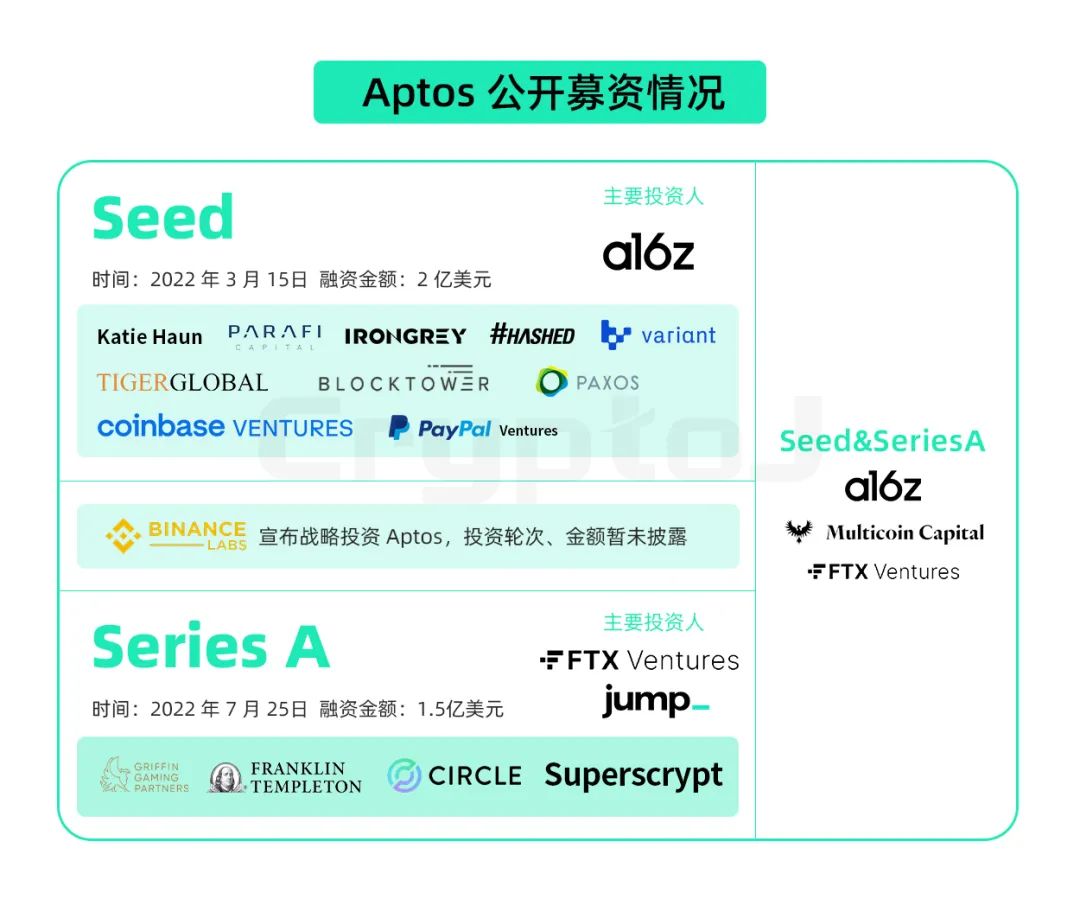
secondary title
2.1 Ecological development
According to Aptos' blog post (https://medium.com/aptoslabs/announcing-the-aptos-grant-program-7654b92e22a1), its ecology currently has more than100 itemsinfrastructureinfrastructureConstruction is the main focus, and the scenarios for deploying applications are mostly products such as wallets, DEXs, and lending agreements. However, judging from the current public information in the market, most of the Aptos ecological projects are still under continuous development.relatively early stagetext
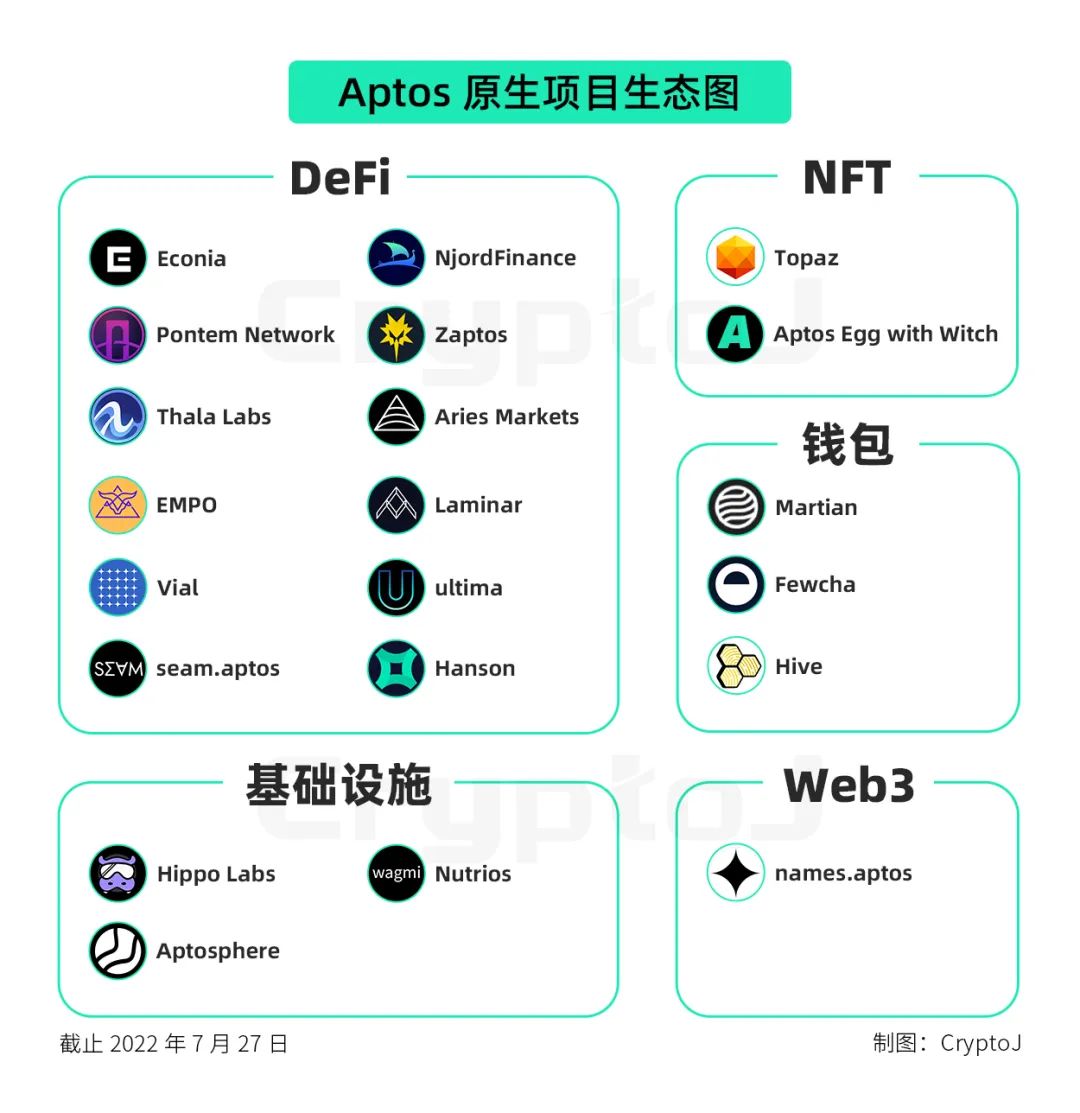
DeFi
Econia
Econia is an ultra-parallel blockchain built on the Aptos public chainOn-chain order book, and more specifically, Econia is a central limit order book (CLOB), the basic financial instrument used by financial institutions such as the stock market, but unlike the NYSE or NASDAQ, Econia is open source and de-crypted. centralized.
Econia is currently under development, and its V1 version will introduce a key innovation for on-chain transactions—Econia Atomic Matching Engine, which enables finality of market order settlement during transactions.
Related link: https://www.econialabs.com/
https://twitter.com/EconiaLabs
NjordFinance
NjordFinance is on Aptosloan agreement, for unlocking yield-generating security and diversification strategies.
Related link: https://twitter.com/NjordFinance
Pontem Network
Pontem is a product development studio dedicated to enabling global financial inclusion through blockchain. Pontem cooperates with Aptos to build base DAPPs and other infrastructure such as development tools, EVMs, AMMs, etc. The Pontem team has developed a Diem-Move fork virtual machine that can be easily deployed to other public chains such as Polkadot, Cosmos, Avalanche, etc. Pontem also makes Move VM compatible with traditional virtual machines like EVM for easy deployment using Solidity or Vyper code bases.
The Pontem team developed the first AMM-based mechanism on the Aptos chainDEX—Liquidswap and wallet MultiMask.
Related link: https://pontem.network/
Zaptos
Zaptos is a non-custodial liquid staking protocol built on the Aptos chain. Users can deposit their assets into Zaptos and receive IOU derivatives, which can be used in DeFi protocols built on the Aptos chain or other Dapps. The vision of Zaptos is to increase network decentralization and make stakers’ locked assets productive on-chain. The goal of Zaptos is to make staked APTOS tokens liquid through zAPTOS while distributing APTOS among multiple validators to increase the network's censorship resistance.
Related link: https://twitter.com/ZaptosFinance
Thala Labs
An efficient stablecoin project built using the Move language.
Related link: https://twitter.com/ThalaLabs
Aries Markets
A decentralized margin trading platform built on Aptos.
Related link: https://twitter.com/AriesMarkets
EMPO
EMPO is a DEX built on Aptos.
Related link: https://twitter.com/Empo_Fi
Laminar
Laminar is a fully decentralized DEX built on Aptos.
Related link: https://laminar.markets/
Vial
Vial is a pooled interest rate protocol that allows users to borrow and lend assets on the Aptos chain. The lending rate is determined algorithmically based on the capital pool utilization rate (the ratio of borrowed assets to supplied assets). Vial has released the testnet on its official website, and users can connect their wallets to claim test coins for experience testing.
Related link: https://www.vial.fi/
ultima
ultima is a liquidity protocol built on Aptos.
Related link: https://twitter.com/ultimaprotocol
seam.aptos
A stablecoin revenue platform built on Celo and Aptos.
Related link: https://www.seam.money/app
Hanson
AMM-based DEX built on Aptos.
text
NFT
Topaz
Topaz is an NFT marketplace on the Aptos chain, allowing for the creation, browsing and trading of NFTs.
Related link: https://www.topaz.so/
Aptos Egg with Witch
It is planned to launch 5,616 NFTs 10 days after the launch of the Aptos mainnet. After the NFTs are sold out, new magical creatures will be created through the destruction system.
wallet
wallet
Martian
The Martian wallet can be used to manage digital assets and access Dapps on the Aptos chain, and also supports minting NFTs on the Aptos development network. Martian Wallet currently provides a Chrome extension version, and plans to provide an IOS version soon.
Related link: https://martianwallet.xyz/
Fewcha
Fewcha is a non-custodial wallet on the Aptos chain, and its functions include supporting token listing and trading, as well as NFT minting and transfer. At present, the plug-in version of Chrome browser has been launched, and the project plans to release the mobile Dapp of ios and Android versions in the fourth quarter of 2022.
Related link: https://fewcha.app/
Hive
A mobile multi-signature wallet on the Aptos chain.
infrastructure
infrastructure
Hippo Labs
Hippo Labs is the aggregation layer on the Aptos chain, providing Aptos ecosystem developers with compiler, SDK and framework-level tools to significantly improve their productivity. More aptly, Hippo is described as an aggregation mechanism - utilizing a user-friendly front-end that gives users direct access to the best pricing and lending rates across multiple indices and currency markets.
Hippo is currently developing and building a transaction aggregator, open source Swap protocol (including constant product exchange, stable curve exchange, piecewise constant product exchange), Move to Typescript Transpiler, transaction simulation API, Aptos-wallet-adapter and other functions and components.
Related link: https://hippo.space/
https://medium.com/@hippolabs/introducing-hippo-the-aptos-aggregation-layer-caefc1a7fc2d
Nutrios
Nutrios, a privacy project on Aptos, is still in early development.
Related link: https://www.nutrios.co/
Aptosphere
Aptosphere indexes Aptos' on-chain activities in real time, providing developers with a fast and friendly API interface.
text
Web3
names.aptos
The domain name service provider (ANS, Aptos Name Service) on the Aptos chain, ANS is a smart contract that maps names to Aptos addresses. Users who apply for a name in names.aptos will get a special NFT, which gives the user the sole right to edit the address of the name. This NFT is composable and can be bought, sold and traded as needed.
Related link: https://www.aptosnames.com/
In addition to the above items,Solana and other ecological projectsAnd developers have also joined the Aptos ecosystem and participated in the development and construction, such as Saber, Wormhole, Solrise, Dialect, Notifi, Switchboard, Paymagic and other projects.
secondary title
2.2 Aptos social media popularity
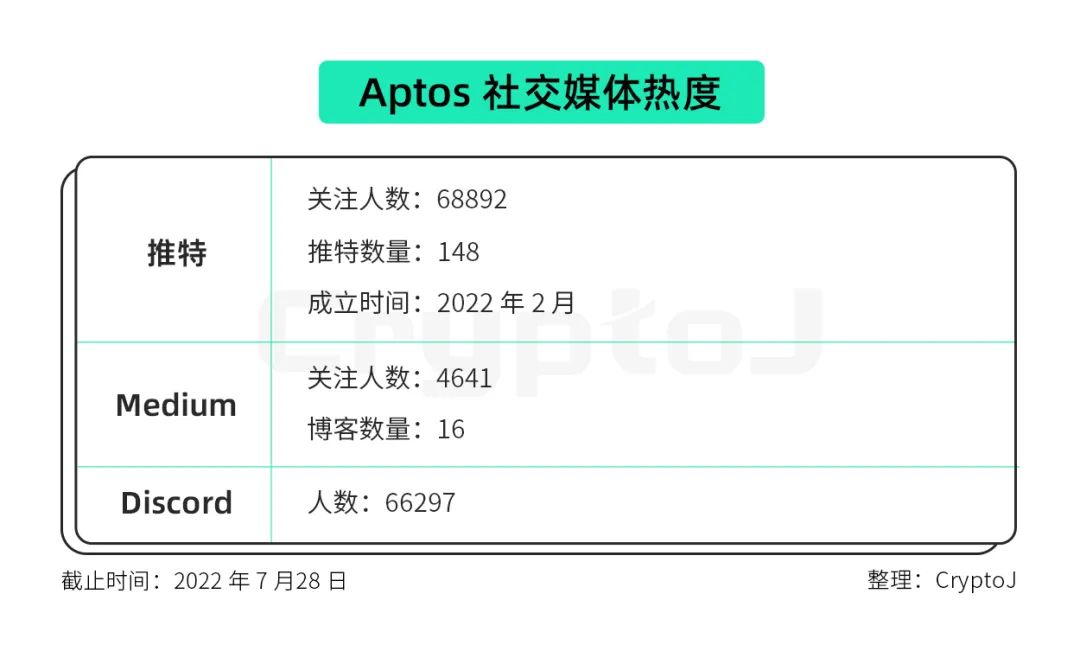
secondary title
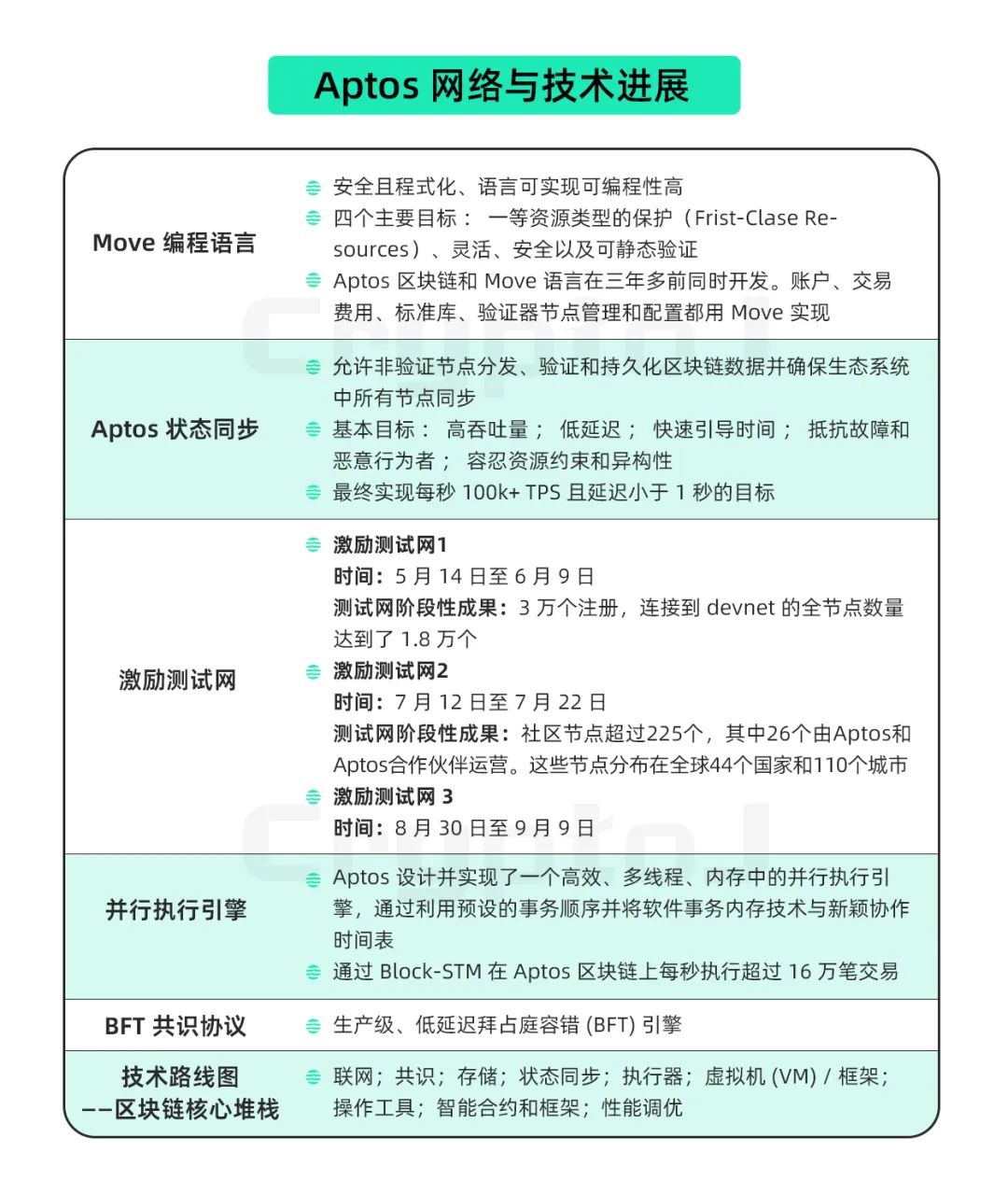
3.1 Move language
Move isOriginally by FacebookThe smart contract language developed and designed by the company.Move(https://diem.github.io/move/introduction.html) is a next-generation language for secure, sandboxed, and formally verified programming. Its first use case isDiem blockchain, Move provides for its implementationBase. Move allows developers to write programs that flexibly manage and transfer assets while providing security and protection from attacks on those assets. However, Move was also developed with use cases outside of the blockchain environment in mind.
3.1.1 The Aptos blockchain and the Move language were developed simultaneously more than three years ago
Move takes inspiration from Rust (https://www.rust-lang.org/) by using resource types with move (hence the name) semantics as explicit representations of digital assets such as currencies.
The Move language is designed for secure resource management and verifiable execution on blockchains. The execution of the transaction isDeterministic, closed and metered. Determinism and closure mean that the output of transaction execution is fullycan be predicted, and only based on information contained in transactions and the current ledger state. Metering is an example of a denial of service attack on the transaction execution levelimportant defense。
The Move validator can formally verify properties of Move modules through an expressive specification language fast enough to run as part of continuous integration testing. Move resources, inspired by linear types, statically ensure resources are preserved and not copied or accidentally destroyed -- fullyA class of potential attacks is avoided.
According to Aptos founder & CTO Avery Ching (https://medium.com/aptoslabs/the-aptos-vision-1028ac56676e), "The Aptos blockchain and the Move language were developed simultaneously over three years ago.Accounts, transaction fees, standard library, validator node management and configuration are all implemented with Move. We love the security of Move and are excited to help build a broad ecosystem around it. "
3.1.2 Four main goals of the Move language
The design of the Move language tries to solve it from the perspective of programming languageProtection of digital assets. Move language is fixedfour main goals: First-class resource protection (Frist-Clase Resources), flexible, secure, and statically verifiable.
The Move language (https://diem-developers-components.netlify.app/papers/diem-move-a-language-with-programmable-resources/2020-05-26.pdf) introduces a "first classResource Type Protection(Frist Class Resources)", simply put, the first-class resource type is first avariable typecannot be copied
cannot be copied
cannot be implicitly destroyed
Can only "Move" on different program addresses
flexible design,Move bytecode can be executed directly, or other published Modules codes can be called, multiple programs can be called in one transaction, and it can be flexibly implemented to transfer money to multiple people in one transaction.
secure, verifiable design,image description
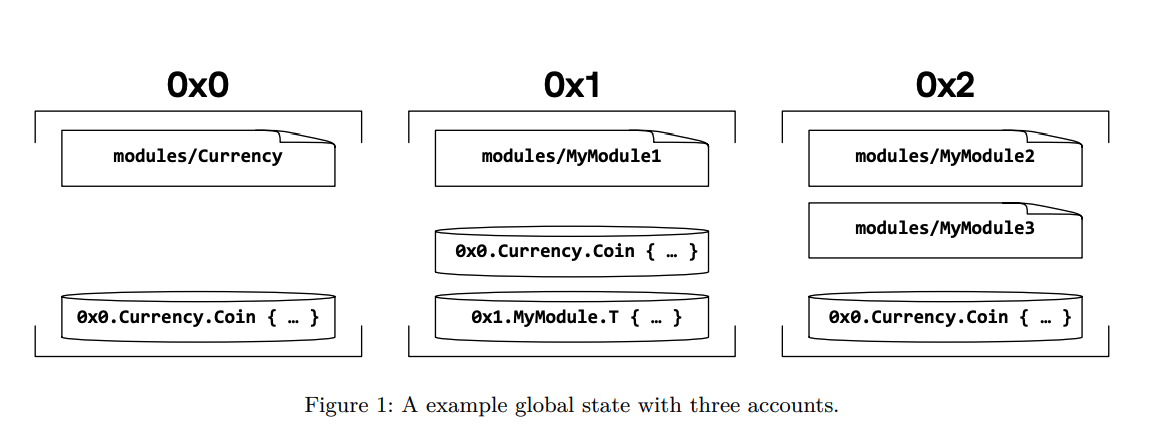
secondary title
3.2 Aptos Status Synchronization
state synchronizationstate synchronizationOn the topic, the Aptos blockchain leverages a wide range of new technologies to ensure high-throughput, low-latency state synchronization across decentralized networks. In Aptos, peer nodes can verify and synchronize over 10k TPS with a latency of less than 1 second, whileAptos is already moving towards 100k+ TPS.
3.2.1 What is state synchronization?
image description
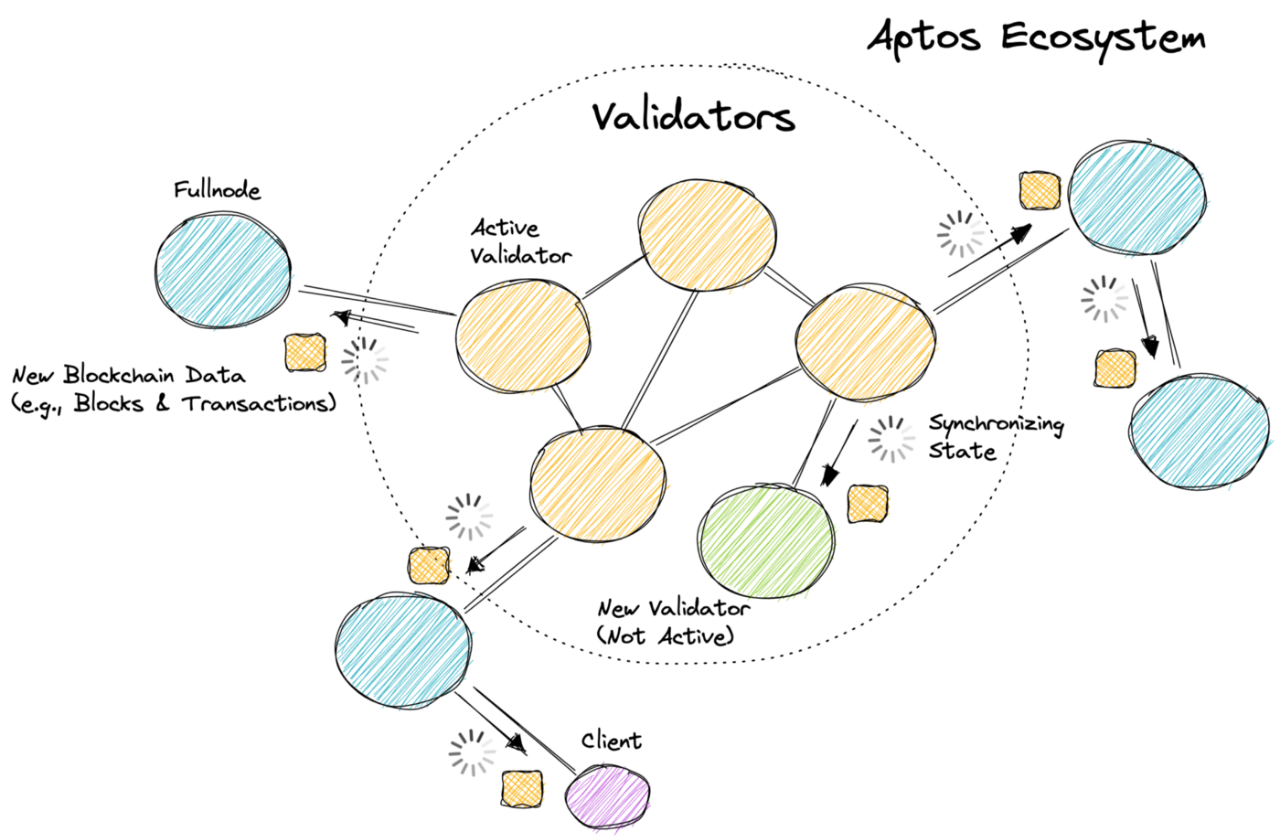
Aptos Ecosystem (Overview)
3.2.2 The importance of state synchronization
State synchronization is rarely mentioned when evaluating blockchains, however, state synchronization has a significant impact on blockchain performance, security, and user experience. Consider the following:
Completion time and user experience
relationship to consensus
Impact on Decentralization
Data correctness
3.2.3 Goals of State Synchronization
With the general model in place, several basic goals can now be defined for state synchronization:
high throughput
low latency
fast boot time
Resistant to glitches and malicious actors
secondary title
3.3 Incentivized Testnet
Aptos has conducted two rounds of incentivized testnets so far, and the goal of AIT-1 is to prove that the Aptos community can unite to deploy and maintain a decentralized network. Through AIT-2, start preparing to become a reliable node operator and test the staking and node reputation framework.
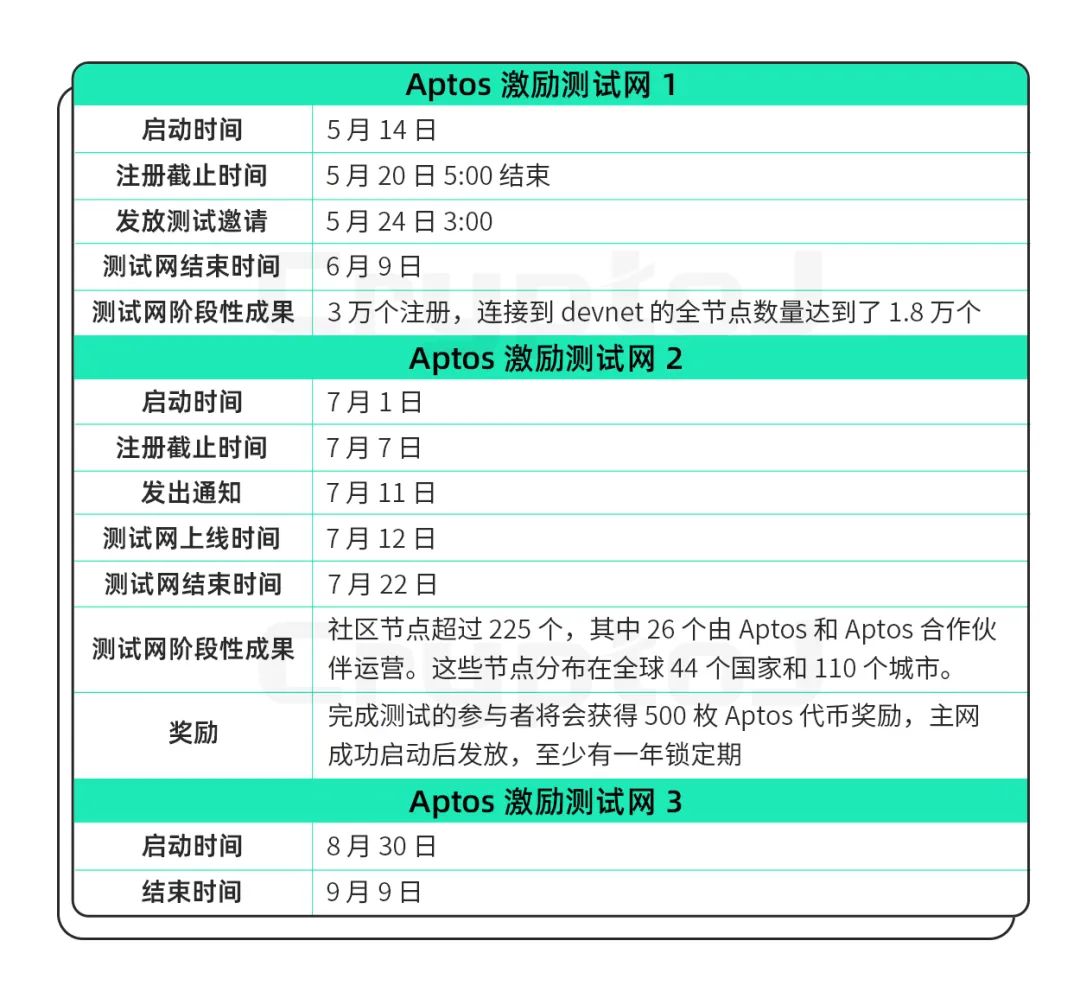
AT1 (Incentivized Testnet 1): Decentralized Launch
Start time on May 14th
Invitations sent on May 24th
Number of participants: 100
success criteria
– Successfully started the node and passed the liveness check within 24 hours
– Availability over 95%
Reward (non-US participants only): 500 Aptos Tokens per successful participant
main result
– Registration and tracking website will be available before IT1 starts
– Initially limited to 100 validators (will be expanded in subsequent stages)
Target
Target
– Execution of a decentralized network using GitHub/Genesis tools
– Testnet completion measured by Aptos stays online and participates
AIT2: Staking
Launch date: July 1
Testnet end date: July 22
main result
– Test coins support staking and staking rewards
– Decentralized faucet support
– Update the gas schedule, e.g. improve and document the cost of each operation in a transaction to make transaction costs predictable
In the closed Testnet 2, there were more than 225 community nodes, 26 of which were operated by Aptos and Aptos partners. These nodes are located in 44 countries and 110 cities around the world.
The rewards are as follows:
– Full reward: 500 Aptos Tokens for those who meet all the official conditions
– Partial reward: 300 Aptos tokens for those who can achieve at least 50% in terms of activity and engagement and other criteria
– Reward: 200 Aptos Tokens for each of the following criteria:
Top 10% and upgrade at least once
Operators who keep nodes in remote locations while meeting all of the above requirements. Because they help to better understand the nuances of how decentralized node distribution affects performance
Operators who have done an excellent job of helping identify key issues and making significant contributions
NOTE: Due to regulatory considerations, Aptos Tokens are only available to non-US participants. Any rewards related to the incentivized testnet will only be offered after the successful launch of the mainnet, and any tokens offered will have a minimum one-year lock-up period.
AIT3: Governance and Escalation
Estimated number of participants: 1000
Success Criteria – Successfully started node and passed liveness checks within 12 hours of node start time – Availability over 97% – Successful participation in standard network upgrade, 2 day response time – Successful participation in Hotfix network upgrade, 12 hour response time – within the first 75 % of consensus participants (consensus voting)
Rewards (non-US participants only): – 5000, 2500 and 1000 Aptos tokens for the first 3 voting nodes – 500 Aptos tokens for each successful participant
AIT3 Registration - August 19
AIT3 Launch - August 30
End of AIT3 - September 9
AIT4: Dynamic validator topology
Estimated number of participants: 1000+
Success Criteria – Node successfully started and liveness check passed within 12 hours of node start time – remaining criteria are still being determined
secondary title
3.4 Parallel execution engine
parallel execution engineparallel execution engine, by utilizing a preset transaction order and combining software transactional memory techniques with novel collaborative schedules.
Aptos implemented Block-STM in an open source code base, relying on Rayon, Dashmap and ArcSwap crates for concurrency. The system was evaluated using non-trivial peer-to-peer move transactions (8 reads and 5 writes).
In the figure below, Aptos compares Block-STM with sequential execution of blocks.Each block contains 10k transactionsimage description
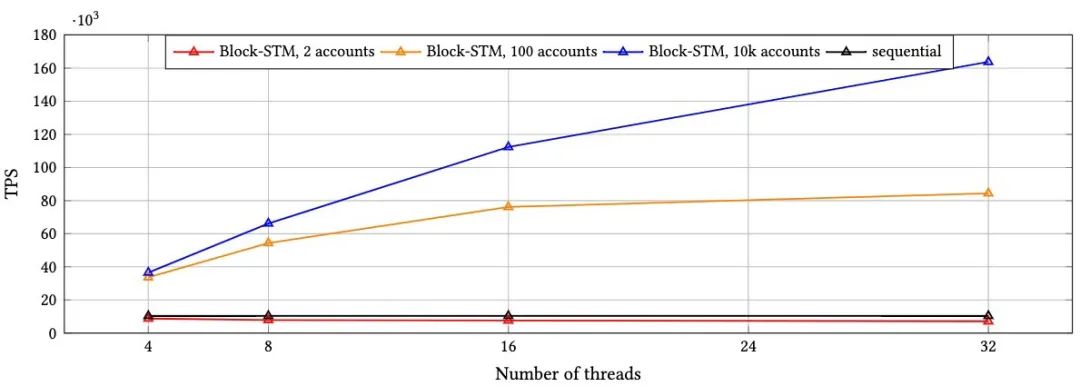
secondary title
3.5 BFT Consensus Protocol
The Aptos team has developed a production-grade, low-latency Byzantine Fault Tolerant (BFT) engine. Over the past three years, the agreement has been implementedfourth iteration(https://github.com/diem/diem/blob/main/developers.diem.com/static/papers/diem-consensus-state-machine-replication-in-the-diem-blockchain/2021-08-17 .pdf) (state-of-the-art HotStuff derivative). During this time, the consensus protocol was upgraded in a private mainnet environment with diverse operators and zero downtime.
Aptos' support for the BFT protocolfirst implementation(https://github.com/aptos-labs/aptos-core/blob/main/developer-docs-site/static/papers/aptos-consensus-state-machine-replication-in-the-aptos-blockchain/2019 -06-28.pdf) added an active pacer that uses a timeout to synchronize validators much faster than waiting for an increased timeout. With recent improvements to the protocol, blocks can be submitted in as few as two network round trips, making sub-second finality a common occurrence.
Aptos Noveltyreputation systemsecondary title
3.6 Technology Roadmap - Blockchain Core Stack
According to Aptos community (https://wiki.aptos.movemove.org/gai-lan/ji-shu-lu-xian-tu) via GitHub repository (https://github.com/aptos-labs/aptos-core) The technical roadmap for tracking issues in is as follows:
networking
On-chain discovery of full nodes - no more advertising
Improved network topology, such as distinguishing between upstream, downstream and peers
DDoS Mitigation and Assessment for Validators - Attacks from Downstream Full Nodes and Validators
consensus
consensus
Dynamic validator sets, subcommittees
Remove legacy consensus code
Deep security rule integration via reference models to minimize replication overhead
Query keys via environment variables or configuration parameters
storage
storage
Fine-grained storage - the current model utilizes blob storage to limit the maximum storage capacity of a single account, including native table extensions
CRSN (Collision Resistant Sequence Number) - use a qualifying sequence number window instead of a sequential field
Storage economics, anti-state explosion. gas and state eviction
state synchronization
state synchronization
Synchronize using latest state and state output deltas instead of transactions
Backup and recovery adapters for endpoints, such as AWS S3 buckets
Intelligence, performance awareness, and roles in consensus (validator set or follower) between consensus and state synchronization
memory pool
Improved transaction serialization and stickiness, including parallel support for same account transactions
Eliminate or restrict validators from broadcasting transactions
Actuator
Enables parallel execution of transactions
Reduced merkle tree update granularity from transactions to blocks
Remove Execution Correctness Trusted Computing Base
Virtual Machine (VM) / Framework
Stricter enforcement of mutability of modules, e.g. temporarily freezing versions and leaving open governance to enable it
Error types or richer errors from non-core framework modules
A modern gas schedule that maps to actual usage
Supports parallelizable sequence numbers, allowing "out-of-order" transaction execution for a single account, also known as anti-collision sequence numbers
operating tool
Validator and full node creation and registration
Key and address rotation
Collaborative backup and recovery with state synchronization
Deep Health Checker
Retrieve and print managed node information
Retrieve and print on-chain information for nodes
Validate full node/validator deployments, e.g. run a standalone testnet
Smart Contracts and Frameworks
Proof of Stake, Delegation and Rewards
Governance/DAO Upgrade Framework Replaces Root Account
DeFi or Exchange Apps
performance tuning
Use perf to evaluate waste and apply valuable changes between validators and full nodes
Unify Tokio executors to reduce contention
4. Potential Uncertainty Factors for Future Development
The "star halo" above the head, Aptos, which has been favored by mainstream leading institutions, has already shown its veil after two rounds of incentive testnets, but the technology, projects, white papers and other information that can be disclosed and the actual implementation situation remain to be seen. In the future development of the chain, there are still some potentialsecondary title。
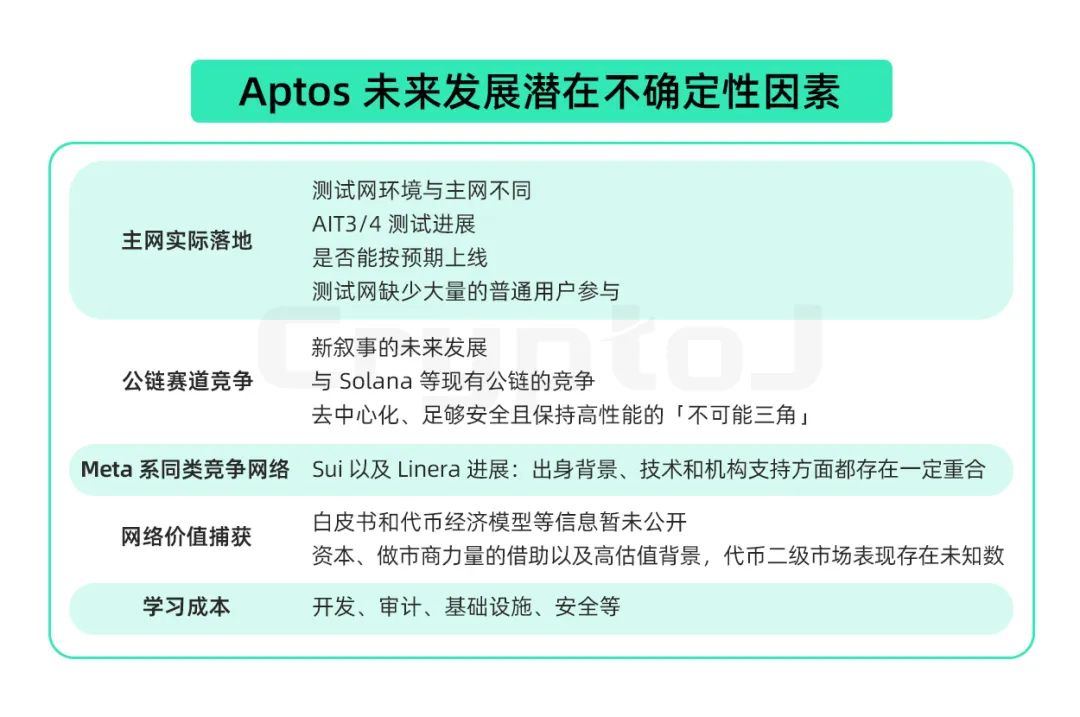
4.1 The actual landing of the main network
Of course, Aptos will inevitably expose certain problems in the two rounds of incentive testnet, such as node panic, state synchronization blocking, high traffic and other problems. The sooner the problem is discovered, the easier it is for the official to solve the problem as soon as possible.
According to the official roadmap, the Aptos Incentive Testnet has 4 rounds, namely:
AIT1: Decentralized startup
AIT2: Staking
AIT3: Governance and Escalation
AIT4: Dynamic validator topology
However, the two rounds of testnet andThe environment of the future main networkThere are still differences. Due to the adjustment of test nodes, number of people, and configuration, although the security of the core functions may be ensured, it still does not rule out possible problems after the subsequent launch of the mainnet.
secondary title
4.2 Competition on the public chain track
The public chain track has always been the most challenging and the best place to carry value. With the rapid explosion of applications such as DeFi, NFT, and Web3, the narrative and conceptual aspects of the public chain are the main concerns of the market One of the points, of course,Public chain trackThe competition never stops.
A breakdown of the development of the public chain track, from BSC, Solana, Avalanche, Fantom, Near, Avalanche, to Terra, one public chain after another not only showed a good answer in the secondary market price, but also ushered in a booming ecology The development has driven a small upsurge of emerging public chains.
But among the public chains with a TVL of more than 10 billion US dollars, currently only Solana is not compatible with Ethereum. Although Aptos is also trying to develop a public chain with its own characteristics, despite this, for example, Framework co-founder Vance Spencer and others tweeted Questioned: "Did Aptos do something that solana didn't do?".
Although Solana's rapid explosion is exciting, its fast enough speed and performance also bring a good user experience, but the centralization problem seems to be difficult to gain the trust of some developers, whether Aptos can be used in theDecentralized, secure enough and maintain high performancesecondary title
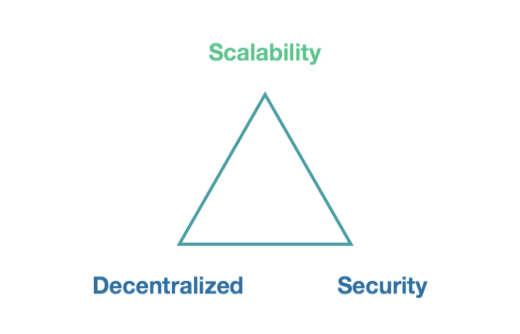
4.3 Meta is the same kind of competitive network
There are also public chain projects that belong to the Meta system like AptosSui and Linera, the founders of the three public chains are all from Meta, and the team members used to be Diem and the encrypted wallet NoviThe main creator and core developer, and a16z participated in the investment.
Similar to Aptos, Sui also continues Libra's Move development language, but Sui has made certain improvements on the original version (Core Move, https://docs.sui.io/learn/sui-move-diffs).
According to informed sources (https://www.theinformation.com/articles/startup-founded-by-former-meta-crypto-execs-seeks-2-billion-valuation?utm_source=organic&utm_content=headline&utm_medium=awarenessbar&utm_campaign=AB_post), Sui development team Mysten Labs is seekingRaise at least $200 million in Series B funding at a $2 billion valuation, this round of financing will be led by FTX Ventures, and investors have committed to provide at least $140 million in funding. Mysten Labs has previously done$36 million in Series A financing, also led by a16z, Coinbase Ventures, NFX, Slow Ventures, Scribble Ventures, Samsung NEXT, Lux Capital, etc. participated in the investment.
exist
existnetwork progressOn the other hand, Sui is currently openIncentivized Testnet Registration, validators, developers, and Sui enthusiasts can apply to participate. The Sui Foundation will reward validators with 2000 SUI for each testnet "wave" they participate in, and promise to pledge up to 10% of the supply of Sui tokens to the best performing validators who continue to participate in the Sui mainnet. SUI token rewards are only provided after the Sui protocol mainnet is launched, and have a one-year lock-up period.
In addition, in the currently publicProject information, white paper version(https://github.com/MystenLabs/sui/blob/main/doc/paper/sui.pdf), Sui has made a more detailed description of its network, technology, and token value capture.
Another "Meta system" Layer1 blockchainLineraAnnounced the completion of a $6 million seed round of financing, also led bya16z lead the round, Cygni Capital, Kima Ventures and Tribe Capital participated in the investment. Funds raised will be used to hire engineers and team members to build the protocol. Linera founder and CEO Mathieu Baudet was a former Meta employee and helped Meta create Libra.
Judging from the current development of the three public chains, Aptos has a slight advantage in terms of ecology and progress, but because the three public chains have great differences in background, technology, and institutional support.Coincidence degreesecondary title
4.4 Network value capture
secondary title
4.5 Learning costs
V. Summary
V. Summary
Taken together, Aptos has a strong presence in terms of technology accumulation, development team, capital support, and narrative direction.huge first mover advantageAt the same time, it has been actively promoting the development of the test network and ecology, and broadening the application in various application fields.
Relying on the basic bottom layer, Aptos tries to break through the layout of the previous public chain, and advances together in network performance, transaction processing capabilities, security, speed, decentralization, etc., to create a new definition of public chain.
Original link

